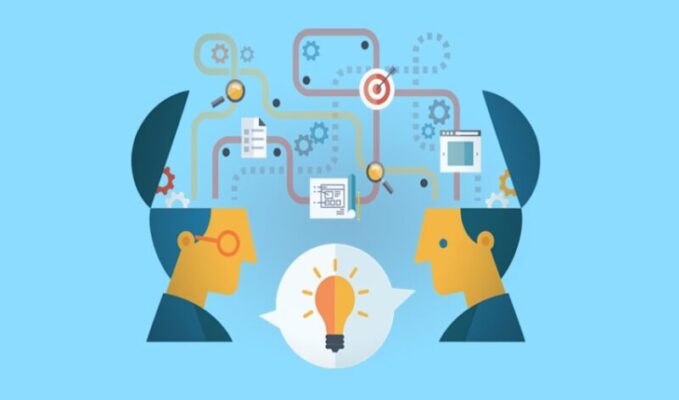Deep learning is a bigger concept or much like an adaptive version of Machine Learning. However, Deep learning is integral for breaking down complex patterns using neural networks to create an idea.
It is a kind of methodology that is useful when it comes to working terms with Artificial Intelligence. On the other hand, since Artificial intelligence is profound and performing human-like activity including speech recognition, self-recognition, understanding speech, it can also learn from it.
Thus, when deep learning is connected to Artificial intelligence, through multiple layers of algorithms, certain tasks are tweaked or rather customized. However, the implemented algorithms that perform these specific tasks are accountable for many variables that are abstract.
This implies that enabling a deep learning model requires one to develop, train, and test constantly. Also, one requires ample amounts of data and computational resources to implement it. Read more to find out.
Deep Learning Model: How to Refine its Use?
When it comes to deep learning, developers do not have access to high-end servers or training samples. So, what they do is, use a deep learning model that is already pre-trained. And based on that, they do finetune. That being said, here’s a brief overview of Pre-trained and fine-tuned deep learning models on Artificial intelligence.
Fine Tuning a Pretrained Deep Learning Model
In order to develop an application that facilitates deep learning, one can use the option of producing a neural network from the beginning. Once that is done, the neural network can be trained over the course of time using curated examples. One such great example is the use of ImageNet. It consists of 14 million images that are labelled, in the form of datasets, available to the public for access.
But, before one can do that, it is advisable to keep any problem from occurring and that is done by building a suitable architecture. Build dense layers, sequences that are ideal for convolution, etc.
Additionally, choose filters and insert your choice of parameters assigning them to each layer. These processes can be time-consuming and require trials and error but all of that can be made possible easily if you are availing a high-end graphics processor.
Also, to complete the training process within a certain limit of time, you can simply use a pre-trained model such as AlexNet, Inception, Or even Resnet. These models have pre-trained presets in it which you can use for your Artificial intelligence application development by integrating it into your choice.
Integrate Image Detection
Deep learning models can also be put to great use if you can implement the use of image recognition. There are multiple algorithm-based models that are predefined. These can be used as a service to recognize any image.
For example, Amazon Rekognition. Basically, these services use API (Application Programming Interface). The reason behind these services being labelled as “Black Boxes”, is because the developers don’t get access to the layers of the network.
Thus, they cannot also interact with the parameters of it. However, it can only be responsible to provide images and get them as per their labels. Here’s an example to make it easier.
In order to develop an application platform that can detect human body disease through image scans such as breast cancer from mammograms or autism from brain scanning, one assumes it needs a recognition model.
However, image recognition models like AlexNet will not be suitable for the task. This is because, in such a concept, data is an important factor but not a wholesome of it. 14 million images are not necessary but the ones that are necessary must be refined through neural network training.
Here’s where Transfer Learning will be of use:
Transfer Learning
When it comes to a huge number of data, you can use the model of Transfer learning to deduce the number of data. What you can do is use a pre-trained model, for instance, “ResNet”, while using the model, you can change the model by retraining it using a new domain.
Keep in mind that a data model that is trained already has parameters in it that are able to recognize features. Hence, the time taken to retrain the model will be far less.
Keep in mind that transfer learning is helpful but the entire process can get complex. Thus, you’d have to free and unfreeze many different layers. Also, you might have to add more layers so that you can realize how close the target domain and the source are.
Other Deep Learning Algorithm Tricks for Growing the Model
The concept of deep learning and Artificial intelligence is very adaptive. Thus, the more refined it is, the best the model.
And, following are some essential tips to overcome challenging situations and to make the model learning a part of new things:
1. Data Accumulation (Data Augmentation)
An Artificial intelligence deep learning model can perform poorly if the amount of data is considered poor. Thus, the more the data, the better the performance of the deep learning model to learn the pattern.
However, it is challenging to accumulate tons of data for the model. In that case, the use of data augmentation can be implemented. It is known as a process that can increasingly train the data model without collecting any data, hence the term ‘Data Augmentation”.
2. Model Underfitting
Often, when you’re working on a deep learning model, you’ll see it performs poorly due to underfitting. This implies the performance relies on architecture, amount of data, etc. If either of them is too simple and less, the model can fail to learn patterns and complexities.
To avoid this from happening, what you can do is, build the model with a more complex plan, so it can find it challenging to learn. Also, raise the training epochs or training data as per wish.
3. Time Consuming Training Process
When you work on building an Artificial intelligence deep learning model, there is another complication which you are likely to face and that is time-consuming. Many times, the converging of the neural network takes extra time.
This usually occurs if you’ve made changes to the layer input distribution. Each layer that received inputs, coincided with that of other layers, in a sequence. Redistribution of input in one layer can simultaneously cause effects in another.
To solve this problem, you can apply the process of “Batch Normalization”. This helps to activate the hidden layers. Thus, the distribution can be equal.
Final Words!
The world of Artificial intelligence and deep learning is growing as each day goes by. If you have a knack for implementing your ideas into a deep learning-based application, then stay updated on the latest developments and trends around the world!
Read Dive is a leading technology blog focusing on different domains like Blockchain, AI, Chatbot, Fintech, Health Tech, Software Development and Testing. For guest blogging, please feel free to contact at readdive@gmail.com.





